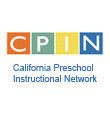Home | Supporting Dual Language Learners | Teacher Interactions and Strategies | Reading
Reading
The following interactions and strategies from the California Preschool Curriculum Framework, Volume 1, pp. 207-216, (CDE, 2010) support dual language learners in building reading skills:
Expose children enthusiastically to all types of print (e.g., magazines, billboard signs, books, posters).
- Create a warm, positive climate for individual and small group book reading and storytelling.
- Show enthusiasm for the content to facilitate interest in books and print.
- Read stories repeatedly in the home language to help children better understand the story narrative; read the same stories in English at a different time.
- Provide opportunities to build background knowledge, promote concept development, and expand vocabulary in the home language by reading to children in their primary language.
Connect literacy to the home culture and community.
- Learn about the child’s home culture and community.
- Use this knowledge to identify books, stories, and strategies that naturally build upon the children’s backgrounds.
- Invite storytellers from the community to read or tell stories in the home language.
- Send home story packs with quality books translated into the child’s home language, CD players, and audio recordings in English.
Build on existing strengths.
- Identify children’s individual strengths and highlight them (e.g., A child may have physical agility and display an interest in performing arts. Allow that child opportunities to build English vocabulary by “moving like the wind”, “running like a river”, or “being silent as a cat”.
Use read alouds.
- Select books that are of high interest to dual language learners and authentically reflect their home culture.
- Introduce key concepts and vocabulary in the home language and in English prior to reading the book.
- Utilize interactive reading strategies to develop English vocabulary.
- Point out key vocabulary and provide expanded definitions with visual aids.
Connect print material to children’s interests.
- Bring children’s personal interests, cherished family members, and familiar interests into the classroom to help connect what the child knows to the classroom.
- Find out what children’s interests are and use this information to build a comfortable and motivating context for learning.
Invite children to discuss and react to story narratives.
- Read stories in the children’s home language before introducing the story in English.
- Check for story comprehension by asking children simple questions about the story.
- Use the home language initially to assess the children’s understanding of narrative and ability to make personal connections to events in the story.
Encourage children to dictate, retell, and create their own books.
- Ask children to tell personally meaningful stories and take dictation.
- Provide opportunities for children to dictate stories.
- Make stories children have dictated accessible.
- Encourage children to revisit the books they have created.
Point out print features during shared reading and writing.
- Point to each word as it is read when reading big books or writing the morning message.
- Model where to begin and the left to right sweep when reading aloud and writing.
- Draw attention to the title and author when introducing books.
Equip all learning areas with books and writing materials.
- Provide multiple opportunities for children to explore the properties of books individually and in small groups.
- Include theme relate books in interest areas.
- Encourage children to read what they have written during play.
Help children create their own books.
- Create opportunities for children to dictate and illustrate their own books about things with which they are familiar (e.g., their families or favorite foods).
- Allow time for talking about, reading about, and publicly sharing their personal lives; this practice fosters pride in children’s cultural identities, creates a positive orientation to literacy, and producing meaningful and engaging texts.
- Encourage children to take their books home to share and read with their families.
Point out the meaning of print around the classroom and in the community.
- Label children’s personal storage spaces with their names in both English and the home language (if the alphabet is different).
- Demonstrate how to use the labels for interest areas to help children associate specific printed forms with meaningful words.
- Draw attention to print in the indoor and outdoor environment.
- Share signs in multiple languages to foster an understanding that different print can represent the same meaning.
Have lots of clear print in multiple languages in the environment.
- Ensure that environmental print represents both English and the children’s home languages.
- Consider color-coding each language so children have a way to differentiate the languages.
- Learn about the writing systems of dual language learners.
- Be explicit that words can look and sound differently in another language but still carry similar meanings about the world.
Engage children in purposeful writing.
- Encourage children to write notes and letters to important people in their lives for authentic purposes (e.g., thank you or reminder notes).
- Allow children to code switch in their writing.
- Point out the sounds and meanings of each words.
- Observe children as they write; notice their ability to understand the ways print works in both the home language and in English.
Have children identify the letters of their own names in any language.
- Hold up name cards during circle time and draw attention to the first letter of each name.
- Represent children’s names in English and in the home language when writing systems differ.
Provide English alphabet letters in multiple forms.
- Include magnetic letters, wooden letters, paper tracing letters, letter stamps, alphabet charts, and other letter forms.
- Provide opportunities for children to interact with the letters in a variety of ways.
Read alphabet books in multiple languages.
- Utilize culturally appropriate alphabet books in multiple language to emphasize letters in both the home language and in English.
- Read the non-English versions one day and the English version another day.
- View an example on the DVD, World Full of Language, “Moving toward literacy”.
Sing silly songs that can be manipulated phonetically.
- Select songs that allow children to hear, repeat, and make up their own sounds to help them learn and manipulate the sounds of English (e.g., "Apples and Bananas").
Sing songs, recite poems, clap rhythms, and do finger plays that emphasize rhymes on a daily basis.
- Provide opportunities for children to play with language via songs and poems.
- Conduct rhyming activities in both English and the home language.
- Use songs, rhymes, and poems that contain more than one language to strengthen these skills in both languages.
- View an example on the DVD,World Full of Language, “Draw attention to sound”.
Identify and practice English sounds that do not exist in the home language.
- Use common English words with sounds that are not found in the child’s home language.
- Emphasize these sounds throughout the day.
Use real objects and emphasize syllables and phonemes.
- Use teachable moments to highlight the beginning sounds of words.
Play games that emphasize the first sounds of common words.





